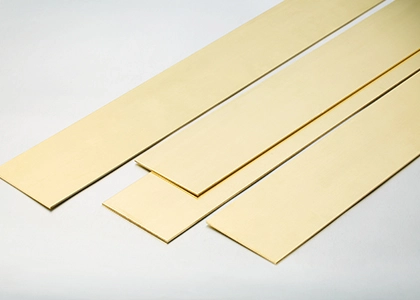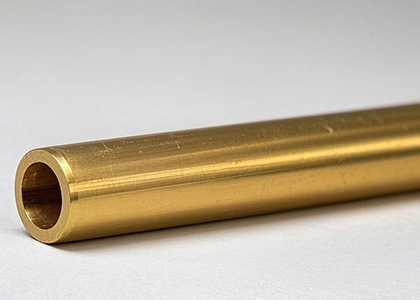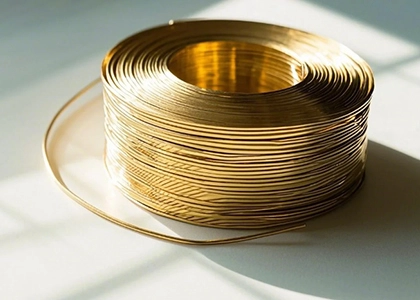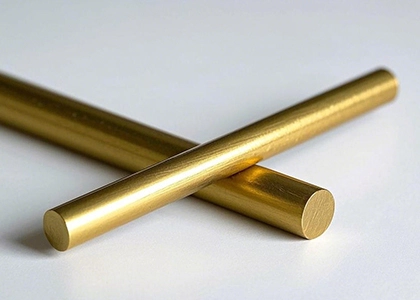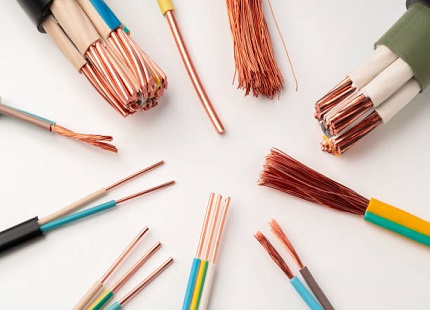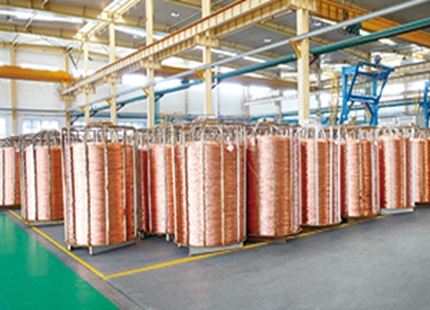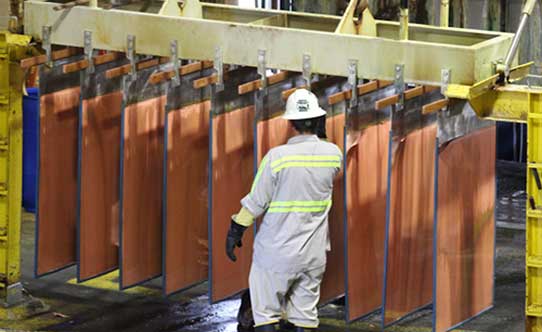Designation and Standards
Standard Designation: H70 (Common Brass)
International/National Standards: GB/T 2059-2000 (Strips), GB/T 5231-2012 (Wrought Brass)
Other Standards: JIS H3100 (Japanese Standard), ASTM B36/B36M (American Standard)
Material Category: Copper-Zinc Alloy (Cu-Zn), Copper content 68.5%-71.5%, Zinc as the remainder.
Product Features
Excellent Plasticity: H70 has the best plasticity among brasses, with excellent cold and hot working ability, suitable for complex stamped parts, such as corrugated pipes, cartridge cases.
High Strength: It has a wide tensile strength range (M≥290 MPa, up to 570 MPa(Y)), offering a good balance between strength and ductility.
Easy Machinability: Good cutting performance, supports welding, soldering and brazing, but annealing is required after cold working to prevent stress corrosion cracking.
Corrosion Resistance: Provides good resistance to freshwater and atmospheric environments but requires careful application in seawater or high-stress conditions.
Common Product Forms and Specifications
Product Form | Specification Range | Delivery Condition |
Plate | Thickness 1-150mm (Commonly 4-14mm) | R (Hot Rolled), M (Annealed), Y (Hard) |
Strip | Thickness 0.1-3.0mm | M, Y2, Y4, etc. |
Tube | Outer Diameter 10-300mm (Capillary Tube 1-6.1mm) | M (Annealed), Y2 (1/2 Hard) |
Bar | Diameter 4-350mm | Black Round and Bright Drawn Bars |
Wire | Diameter 0.1-12.7mm | Coils or Straight rods |
Chemical Composition
Element | Cu | Zn | Pb | Fe | Ni | Total Impurities |
Content (%) | 68.5-71.5 | Remainder | ≤0.03 | ≤0.10 | ≤0.5 (Depending on Standard) | ≤0.3 |
Physical Properties
Property | Value | Remarks |
Density | 8.53 g/cm³ | Lighter than pure copper, providing a lightweight advantage |
Thermal Conductivity | 140.2-141.7 W/(m·℃) | Comparable to pure copper, ideal for heat dissipation applications |
Melting Point | 966-1001℃ | Alloy melting range |
Coefficient of Thermal Expansion | 19.1×10⁻⁶/℃ (20-300℃) | Good thermal stability |
Electrical Conductivity | ~32% IACS (M) | Lower than pure copper, but sufficient for general conductivity applications |
Mechanical Properties
Property | Value | Test Condition |
Tensile Strength (σb) | 290-570 MPa | Varies significantly depending on condition (M/Y) |
Elongation (δ10) | 3%-45% | Up to 45% (M) |
Hardness (HV) | 55-190 | Higher hardness (Y) |
Annealing Temperature | 600-700℃ (Eliminate cold work hardening) | Recommended for conventional furnace annealing |
Hot Working Temperature | 820-870℃ | Prevents zinc volatilization |
Core Advantages
Outstanding Comprehensive Performance: offers the best plasticity among brasses with balanced strength, making it suitable for deep drawing, bending, and other complex processes.
Wide Form Adaptability: Available in plates, tubes, wires, and more, fulfilling various industrial customization needs.
Cost-Effectiveness: Lower cost compared to Alpha Brass Alloy, making it ideal for mass production.
Product Applications
Electronics and Electricals: Radiator housings, conductive terminals, instrument housings.
Industrial Manufacturing: Corrugated pipes, cartridge cases, gaskets, cold-stamped parts.
Construction and Marine: Plumbing fittings, condenser tubes (requires corrosion protection in seawater).
Paper-Making Equipment: Paper-making pipes, metal mesh screens.
Processing Considerations
Annealing Treatment: After cold working, annealing at 600-700℃ is recommended to relieve internal stress and prevent stress corrosion cracking.
Welding Process: Argon protected welding is recommended to avoid zinc evaporation and porosity defects.
Temperature Control: Hot working temperature should not exceed 870℃ to prevent grain coarsening.
Frequently Asked Questions
Q: What is the difference between H70 and Copper (T2)?
A: H70 is brass (Copper-Zinc Alloy) with higher strength and lower cost; T2 is pure copper (Cu≥99.9%) with superior electrical conductivity but lower strength.
Q: Is H70 suitable for seawater environments?
A: Direct use in seawater is not recommended due to higher corrosion rates (0.0075-0.1 mm/a). Protective coatings or Tin Brass should be used instead.
Q: Why is annealing necessary after cold working H70?
A: Cold work hardening induces internal stress, leading to stress corrosion cracking. Annealing restores plasticity and eliminates stress.
Standard References
Chemical Composition and Processing: GB/T 2059-2000, GB/T 5231-2012.
Mechanical Property Testing: GB/T 228.1 (Tensile Test).
International Standards: ASTM B36 (General Standard for Plates), JIS H3100 (Japanese Standard for Tubes).
Note: The above data is compiled from multiple industrial standards and technical documents. Actual performance may vary depending on production processes and testing conditions. Refer to supplier test reports for specific values.

 English
English 한국어
한국어 français
français Deutsch
Deutsch Español
Español italiano
italiano العربية
العربية tiếng việt
tiếng việt Türkçe
Türkçe ไทย
ไทย 中文
中文
